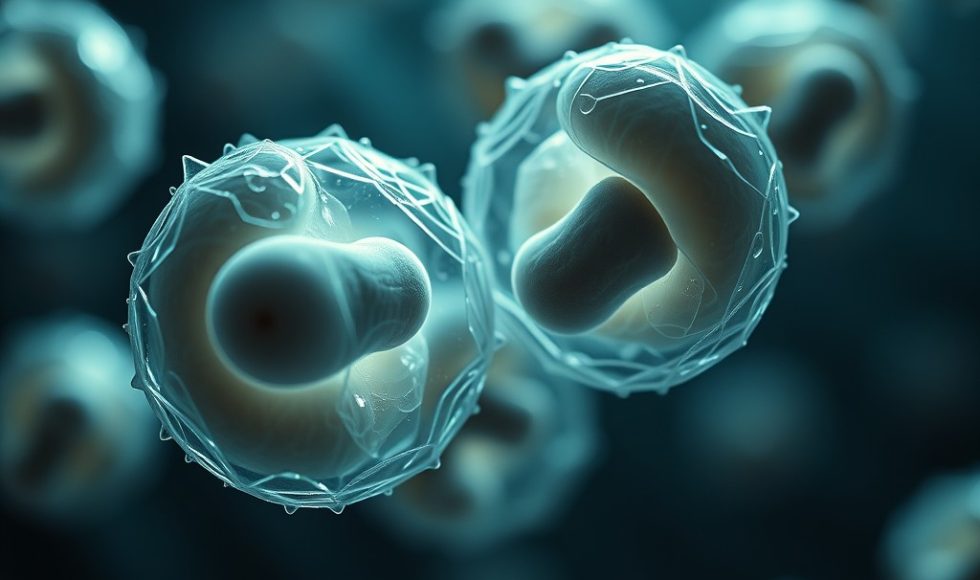Nikhita Damaraju from the University of Washington in Seattle presented at the Nanopore Community Meeting in Boston. The session’s title was “Evaluating the quality of long-read phasing methods in clinically relevant genes.” They explained that variants are inherited in equal measure. Damaraju defined phasing as the process of assigning variants to parental copies. Understanding which […]
J. (Gus) Gustafson from the University of Washington spoke at the Nanopore Community Meeting in Boston about “needLR: a structural variant filtering and prioritization tool for long-read sequencing data.” They noted that half of suspected Mendelian conditions remain undiagnosed after current clinical testing methods. The Miller Lab at the University of Washington uses Oxford Nanopore […]
Tonight, I watched Qiliang (Andy) Ding from the Mayo Clinic present at the Nanopore Community Meeting in Boston. The session’s title was “Resolving structural configurations of DMD intragenic duplications through nanopore long-read sequencing.” Ding is a Laboratory Genomics Fellow. Ding noted that the DMD gene encodes dystrophin, an essential protein for muscle function. This gene is associated […]
Latana Grub from Vanderbilt University spoke at the Nanopore Community Meeting in Boston. The session was titled “Long-read sequencing reveals the molecular landscape of mitochondrial DNA 6mA methylation.” Grub studies mitochondria. They noted that mitochondria are important organelles with their own genome and are critical for energy. Mitochondrial DNA has only one regulatory system. Grub […]
Svetlana Madjunkova from the CReATe Fertility Centre in Canada presented at the Nanopore Community Meeting in Boston. The session’s title was “Nanopore sequencing in reproductive care.” Nanopore sequencing can be used in reproductive care at several stages of assistive reproductive therapies. Preimplantation genetic testing can improve the success of transfers. Madjunkova noted that current next-generation […]
Karine Choquet from the University of Sherbrooke in Canada presented at the Nanopore Community Meeting in Boston. The session’s title is “Genetic regulation of nascent RNA maturation revealed by direct RNA sequencing.” Newly synthesized RNAs are exported to the cytoplasm for translation. The research team was interested in learning more about RNA processing and poly(A) […]
Alisa MacCalman from the University of Exeter in the UK presented at the Nanopore Community Meeting in Boston this year. The title of the session is “Understanding the binding of multiple transcription factors by base-pair-resolution chromatin accessibility.” The lab is interested in regulatory regions of the genome and how they help encode the diversity of […]
Jack Colicchio from Sound Agriculture in the US presented at the Nanopore Community Meeting in Boston on “DNA methylation patterns explain missing heritability in maize.” This ten-minute session was part of a breakout group. Colicchio spoke about the need for more resilient crops to address pollution, climate change, and population changes. They spoke about how, […]
Gabriela Pozo from the University of San Francisco de Quito in Ecuador presented at the Nanopore Community Meeting in Boston. The session’s title was “Obtaining reference genomes of emblematic and endangered Ecuadorian species.” Pozo noted that Ecuador is one of the seventeen megadiverse countries globally. However, conservation efforts are also needed. Genomics, noted Pozo, can […]
Tonight, I watched a shorter Nanopore Community Meeting Boston session. Anastasia McKinlay from Indiana University & HHMI presented on “Positional mapping of active versus silenced rRNA gene clusters within A. thaliana nucleolus organizer regions. McKinlay spoke about nucleolus organizer regions in Arabidopsis thaliana. These positions are difficult to understand with shorter reads. Long-read sequencing helped […]











